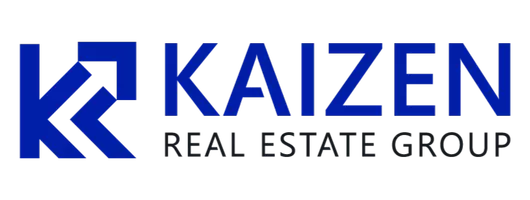Why are some vendors dragging their feet on the ICE SDK transition?
It isn’t news that ICE Mortgage Technology had planned to shut down some of its older tech systems — mainly the Encompass SDK — by Oct. 31, 2025. Users were supposed to switch to newer, API-based technology called Encompass Partner Connect (EPC) by that deadline.
Now, the Halloween deadline has been pushed. Instead of 2025, ICE’s SDK and other legacy systems will stay alive until Dec. 31, 2026, over a year after originally intended. SDK will still work until the end of 2026, but after Nov. 1, 2025, no new features will be added — only support.
After the 2026 cutoff, lenders who still need SDK access will have to get special approval and pay extra fees. ICE says the extension is to give lenders and vendors more time to move over confidently without breaking operations.
The thing is, says Matthew VanFossen, CEO of Absolute Home Mortgage and Mortgage Automation Technologies, lenders and vendors should have been prepared for the deadline without any surprise.
“I remember going back to 2016 and 2017… they were talking about the inevitable sunset of the SDK and moving over to the API framework. So this has been a topic for well over seven years in our industry,” VanFossen said. “I think that the pushback that they’re getting is not so much from the lenders. It’s from the lenders that are not prepared because of their vendors.”
Will lenders and vendors learn from this?
VanFossen says that as both a lender and a vendor, he had plenty of warning that the shift was going to happen. “When I was releasing the big point of sale, and you can quote me on this, they would not let me release my code in 2023 and get the approval unless it was 100% API based. And when I asked why, they said we’re doing this because we’re going to make all vendors do this.”
A vendor who asked to remain anonymous said that with the original deadline being two months away, everyone should have been prepared. “My biggest question is, what vendors weren’t prepared for this?” the vendor said. “It is a huge lift to switch to EPC, and a lot of them were rushing to hit the deadline or were planning on not hitting it.”
Some are concerned that the pushed deadline will lead vendors to continue kicking the can down the road. “I dont think it necessarily means ICE underestimated adoption hurdles,” commented Scott Kimberly, an Encompass administrator with Emporium TPO.
He continued, “I am positive that there are a few places out there that read this update and tabled their roadmaps because ‘they have so much more time now,’ which is exactly why I think ICE set such an ambitious timeline. If you dont push some people, they won’t update!”
VanFossen says that ICE is caught in a hard place between trying to understand lenders who are still dependent on SDK-based processes and vendors asking for extensions, versus making investments into API tech. At some point, enough is enough.
“The lenders are ICE’s primary client, and these lenders need to continue making mortgages, and if their ability to make mortgages is dependent on some of these SDK-based processes…they’re not ready to move off of it, well, ICE has to hear that out from their clients,” VanFossen said. “From the vendor standpoint, I think ICE can put a lot more pressure on the vendor network, and I think they got their extension that they asked for, but now it’s going to be lights out if they don’t move over. ICE can’t continue to make investments into this older architecture, and eventually, they’re going to just stop supporting it.”
Vendor apprehension, VanFossen says, could cost them. “The API isn’t offering any different features that the SDK doesn’t have. It’s not about features. It’s not about a shiny new toy…it’s about speed. It’s about how fast the system works, it’s about how it corresponds to the database,” he said. “I would say that if ICE did not extend this, you would have potentially seen some vendors go out of business.”
Kimberly says the new timeline does not affect his company’s roadmap. “We have been trying to pull back from SDK-based plugins, especially where this isn’t a guarantee of an API-based replacement,” he said.
Growing pains
Nathan Sharp, the director of mortgage technology at Direct Mortgage Loans, is concerned that the current SDK technology’s customizations and information won’t translate to the API, leaving him wary about the transition.
“By removing the SDK and providing no clear path to converting all customizations to API, it puts a tremendous amount of work and stress on developers and admins to find solutions using the API, deprecate existing customizations that cannot be converted to the API functionality that currently exists,” he said, adding that the deadline has put him in a tough spot.
“It’s been hard to plan workloads and hire around these changes when it’s a moving target by ICE. It’s also difficult to innovate and keep Encompass unique from other LOS platforms when that SDK customization is removed. It certainly is making life more difficult for people like me.”
Sharp believes that the API has “little to offer” over the SDK. “Now, does it help some vendors integrate more efficiently? Maybe. But there are not many wins on the user side, hence the uproar from users.”
Patrick O’Brien, CEO at LenderLogix, has called the move from SDK to API “a win” for the industry in an op-ed last year. In an interview with HousingWire, O’Brien says he still holds that opinion.
“As a software vendor, we’re good at adapting quickly and making those changes…I think that some lenders who have built their own stuff are probably a little bit behind the eight ball,” he said. “I think ultimately, the transition is a great thing as lenders have sort of embraced the API infrastructure and moved towards more automated workflows.”
Categories
Recent Posts









